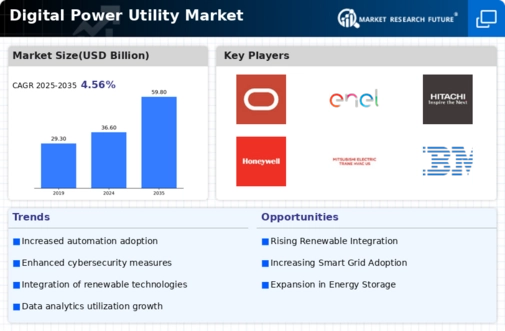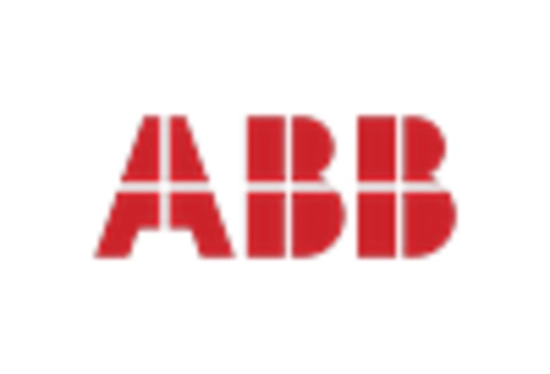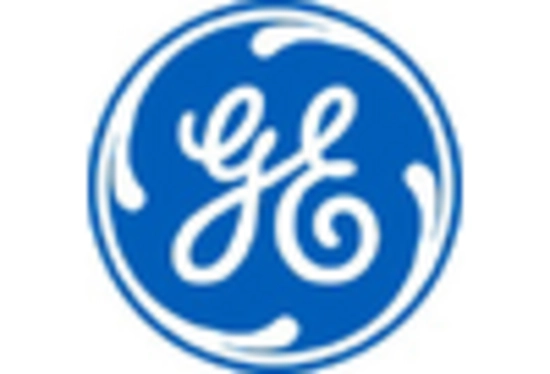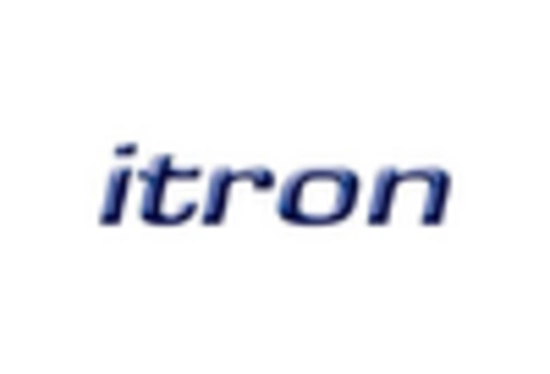Growing Demand for Energy Efficiency
The Digital Power Utility Market is witnessing a heightened demand for energy efficiency solutions. As consumers become more environmentally conscious, there is a pressing need for utilities to optimize energy consumption and reduce waste. Digital technologies, such as smart meters and energy management systems, play a pivotal role in this transformation. According to recent data, energy efficiency initiatives could potentially reduce energy consumption by up to 30% in certain sectors. This trend not only benefits consumers through lower energy bills but also supports utilities in meeting regulatory requirements and sustainability targets. Consequently, the demand for energy-efficient solutions is likely to propel the growth of the Digital Power Utility Market.
Advancements in Data Analytics and IoT
The Digital Power Utility Market is significantly influenced by advancements in data analytics and the Internet of Things (IoT). These technologies enable utilities to collect, analyze, and utilize vast amounts of data to enhance operational efficiency and customer service. The integration of IoT devices allows for real-time monitoring and predictive maintenance, which can reduce downtime and operational costs. Market data indicates that the IoT in the energy sector is expected to reach a valuation of several billion dollars by 2026, highlighting the potential for growth in the Digital Power Utility Market. As utilities increasingly leverage these technologies, they can improve grid reliability and customer satisfaction.
Regulatory Support for Digital Transformation
The Digital Power Utility Market is experiencing a surge in regulatory support aimed at facilitating digital transformation. Governments are increasingly recognizing the need for modernized energy infrastructure, leading to the implementation of policies that encourage investment in digital technologies. For instance, regulatory frameworks are being established to promote the integration of advanced metering infrastructure and data analytics. This support is crucial as it not only enhances operational efficiency but also aligns with sustainability goals. The market is projected to grow significantly, with estimates suggesting a compound annual growth rate of over 10% in the coming years, driven by favorable regulations that incentivize utilities to adopt digital solutions.
Increased Investment in Smart Grid Infrastructure
The Digital Power Utility Market is benefiting from increased investment in smart grid infrastructure. Utilities are recognizing the importance of modernizing their grid systems to accommodate the growing demand for reliable and efficient energy delivery. Investments in smart grid technologies, such as advanced sensors and automated control systems, are essential for enhancing grid resilience and integrating renewable energy sources. Recent reports suggest that investments in smart grid infrastructure could exceed hundreds of billions of dollars over the next decade. This influx of capital is likely to drive innovation and growth within the Digital Power Utility Market, as utilities seek to improve their operational capabilities and customer engagement.
Rising Consumer Expectations for Digital Services
The Digital Power Utility Market is increasingly shaped by rising consumer expectations for digital services. As technology becomes more integrated into daily life, consumers demand greater transparency and control over their energy usage. Digital platforms that offer real-time data, personalized energy management tools, and seamless communication with utilities are becoming essential. Market trends indicate that utilities that invest in enhancing their digital service offerings are likely to see improved customer satisfaction and retention rates. This shift in consumer behavior is prompting utilities to prioritize digital transformation initiatives, thereby driving growth in the Digital Power Utility Market.

















Leave a Comment